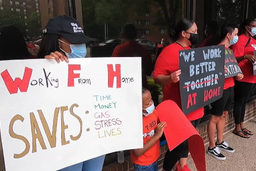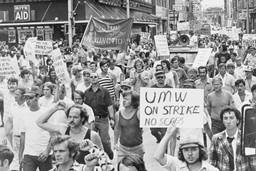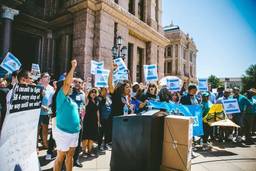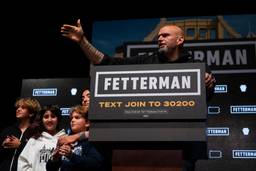This article was the cover story of In These Times’ December 14, 1997 issue.
Not long ago, Teamster scandals were the work of wise guys with names like Jimmy the Weasel, Fat Tony, Tony Ducks or Tony Pro. The current one, surprisingly enough, is the work of people associated with the Democratic Party, Citizen Action, liberal unions and other progressive causes.
During the 1996 re-election drive of reformer Ron Carey, who was elected president in the union’s first membership vote in 1991, the reputation and moral authority of his new, corruption-free Teamsters took a serious beating, not at the hands of his opponent, James P. Hoffa, but due to the actions of his own campaign handlers and inside-the-Beltway boosters. Their election violations prompted federal overseers to order a re-run of the contest, scheduled to begin on February 16.
On November 17, the Teamster reform movement suffered an even greater blow when election investigator Kenneth Conboy ruled that Carey should not be allowed to participate in the re-run because he knew about improper fundraising by his campaign. Carey denies the charge and has pledged to appeal Conboy’s decision.
Meanwhile, federal prosecutors in New York are continuing a criminal investigation. Three Carey associates have already pleaded guilty and face heavy fines and jail time for mail fraud, conspiracy or embezzling union funds on Carey’s behalf. They are: his campaign manager, Jere Nash, a onetime leader of Mississippi Common Cause and consultant to tlis 1996 Clinton-Gore campaign; Martin Davis, a millionaire “ssmster political adviser, who also aided the Democratic National Committee (DNC) and brokered deals for the A.FLC” 0’s Union Privilege credit card program; and Michael Angara, a former community organizer and leader of Students for a Democratic Society (SDS) at Harvard University in the late ’60s, who later became a “socially-responsible” businessman.
Other alleged participants in or casualties of this troika’s illicit scheming include the Teamsters’ political director William Hamilton, an alumnus of the American Federation of State, County and Municipal Employees (AFSCME) and a former business associate of Ansara. Hamilton was forced to resign in July and now faces Teamster Independent Review 3card charges of aiding the diversion of dues money to Carey’s campaign — a matter that a federal grand jury in New York is also investigating. Ira Arlook, director of Citizen Action and another ex-SDSer, has run up more than $200,000 in legal bills defending his organization against possible criminal charges over its Teamster money-laundering role. The scandal so damaged the fund-raising ability of Citizen Action’s national organization that the group just closed its Washington, D.C., office and laid off 20 staffers.
The biggest potential losers, however, are Teamster members — particularly those who have worked for change in the union. In the face of beatings, black-listing, redbaiting and other obstacles to reform, Teamsters for a Democratic Union (TDU) — labor’s most durable and successful rank-and-file group — sacrificed and struggled for more than 20 years to eliminate corruption, gangsterism and sweetheart deals. The reformers’ efforts finally bore fruit six years ago with Carey’s victory in an election conducted as part of the settlement of a Justice Department lawsuit filed under the Racketeer Influenced and Corrupt Organizations (RICO) Act. Working with TDU activists around the country and a minority of local officers, Carey has since put 75 troubled locals under trusteeship, cut waste, stepped up Teamster organizing, hired aggressive new staff and won significant bargaining victories like the recent United Parcel Service (UPS) strike.
Now, the shenanigans of Carey’s reelection team are overshadowing — and threatening to undo— much that he and TDU have accomplished. Hoffa, son of the union’s most notorious past president, is gearing up for another bid to oust the reformers from office. Labor’s recently improved public image has taken a big hit as stories about Carey’s clean-up have been replaced by embarrassing media revelations about Teamster election violations. The scandal lias given critics of democracy in other unions stronger arguments to use against direct election of their top officers. And it’s also created uncertainty about the future direction of the AFL-CIO because, just as Carey’s 1991 victory boosted John Sweeney’s chances of becoming federation president two years ago, the defeat of Teamster reformers now could undermine Sweeney’s own administration.
In his ruling on Carey’s eligibility, Conboy, a former federal judge, acknowledges that there is more to be investigated about Hoffa’s fundraising practices. Teamster reformers argue that if diverting union dues into campaign treasuries or accepting money from employers or Teamster vendors is going to be a disqualifying offense for Carey, it should also remove Hoffa from the ballot. As In These Times went to press, no new candidates had emerged. Nevertheless, it’s worth examining how the union’s reform project became so endangered in what may yet become a full-blown tragedy for labor.
The current scandal has its roots in the later stages of Carey’s first run for the Teamster presidency. There were no high-priced consultants around when he launched his original campaign in 1989. Back then, he was a Queens, N.Y., UPS local president with a reputation for honesty, militancy and independence from the corrupt power structure of the union. He was the very definition of a “dark horse” candidate — and widely dismissed as such by labor insiders and the press.
Carey’s first election effort relied almost entirely on TDU because he had so little backing within the union’s bureaucracy. Only 30 out of 600 Teamster local presidents ever endorsed him. Directed by ex-United Mine Workers staffer Eddie Burke, a hero of the 1989 Pittston coal strike, the official Carey campaign was often an exercise in improvisation— constantly shored up by TDU National Organizer Ken Paff in Detroit and the group’s network of experienced activists (who were heavily represented on Carey’s slate). Unlike last year’s fiasco, Carey’s earlier run was low-budget (costing less than $1 million) and based on the leafleting, phone-banking and organizing activity of hundreds of rank-and- file volunteers.
To reduce the official campaign’s dependence on and political debt to TDU (which Carey has never joined), Burke made a fateful decision in 1991. He hired the November Group, a Washington, D.C.-based political consulting firm, and a Somerville, Mass., fund-raiser called the Share Group. The now-defunct November Group was a typical hive of liberal hustlers. Its then 30- year-old co-founder and partner, Martin Davis, got his start working for Walter Mondale. He and Hal Malchow, the firm’s other principal, had a client list that included the BNC, state Democratic parties and the Clinton-Gore campaign. Their specialty was campaign strategy, fund-raising and get-out-thevote “oersuasion mail.” Davis and Malchow’s main contribu-tion to Carey’s first run was a series of embarrassing ads in The Teamster magazine that featured photos of pigs feeding in a trough and models dressed up as cartoonish Mafia figures. Even the Carey backers most concerned about union corrup-tion found the material crude and vacuous.
Neither the November Group or Share — founded by Michael Ansara and partly owned by Davis and Malchow — raised much money for Carey’s first campaign or made big bucks offof it. But Davis and Ansara saw their work as an investment in the future. It was a foot in the door of the Teamsters’ “Marble Palace” in Washington that they believed would lead to more lucrative deals after the reformers took over.
The consultants’ payback wasn’t long in coming. Even before Carey’s February 1992 inauguration, the November Group made a failed bid to take over Teamster publications. Then the firm moved in on the union’s legislative department and its $4 million political-action fund. At Burke’s suggestion, Carey hired Jere Nash to take charge of the Teamsters’ “transition process.” Nash’s chief credential was that he had once overseen the transition team of Mississippi Governor Ray Mabus. Like his fellow political consultants, Nash had never worked for a union before, knew nothing about the Teamsters and had no connection to members or to the reform movement.
Nash, in turn, gave the November Group a key role in making recommendations about the future of the union’s political program. Not surprisingly, the consultants suggested using more direct mail and consultant services. Between 1992 and 1996, the November Group billed the Teamsters for $650,000 (and rewarded Nash by making him a contract employee of the firm). More importantly, Malchow and Davis profited from introducing their political clients — Democratic candidates in need of cash — to their new friends at the Teamsters, who had a big pile of money in the union’s DRIVE (Democratic Republican Independent Voter Education) fund. The consultants worked closely with Hamilton, who became the Teamsters’ chief dispenser of hard and soft money. In this role, Hamilton thwarted any Teamster backing for the fledgling Labor Party and arranged only token giving to the New Party. His idea of independent political action was telling Transport Topics last January that “the Teamsters’ PAC had plans to give more to the GOP” since “they control Congress” and the union wanted “to build bridges to those in power.”
In the larger scheme of things within the “New Teamsters,” this business-as-usual approach to politics might only have been a minor disappointment of Carey’s first term. After all, Carey had, with the help of other staffers, staked out an independent position on political issues ranging from NAFTA to the merits of Bill Clinton (whom Carey refused to endorse in 1996 because of his anti-worker free trade deals). But, unfor-tunately, Carey’s vocal criticism of politicians who betrayed labor didn’t translate into new DRIVE priorities that might actually affect their behavior. The union’s political apparatus remained to the hands of Beltway insiders preoccupied with Democratic Party deal-making, White House invitations and congressional “access.” Carey’s deferral to these folks on polit-ical matters became the Achilles’ Heel of his administration.
Reformers had a tougher time getting re-elected last year than they expected. Carey’s crackdown on crooks and leadership perks alienated large sections of Teamster officialdom. Still-powerful bureaucrats who split their support between two “Old Guard” candidates in 1991 bankrolled a unified $4 million challenge, fronted by Hoffa. For too long, Carey adopted a “Rose Garden” strategy in the face of this threat. He avoided the personal campaigning in the field that had made such an impact on members the first time around. This enabled Hoffa to don the mantle of the insurgent. The wealthy Detroit labor lawyer masqueraded successfully as a populist critic of a “New Teamster” establishment that was spendthrift, incompetent and run by “outsiders.” To strengthen his political base and survive a July 1996 convention dominated by the Hoffa forces, Carey decided to broaden his Executive Board slate.
Some of his new running-mates delivered much-needed votes through their own local political machines. But, overall, the Carey administration’s tilt to the center had a dampening effect on grassroots campaigning wherever there was tension between the rank and file and officials now allied with Carey.
Enter the “Gang of Three” — Davis, Ansara and Nash — with their political contacts, rich friends, focus groups, telemarketing schemes, junk mail and self-serving advice about how consultants like themselves could save the Teamsters from Hoffa. With Nash installed as Carey’s campaign manager, they con-spired to finance a costly “air war” on Carey’s behalf that was viewed as a safe political substitute for fighting it out on the ground. Their crowning achievement was a panic mailing of 1.7 million fliers sent out during a one-week period so late in the campaign that many Teamsters didn’t get them until after they’d already voted while others received as many as five different Carey leaflets on the same day.
Footing the bill for this $700,000 last-minute barrage was a big challenge. Since the bill was coming from Davis’ own November Group, he took the lead in raising the necessary funds. He devised various ways of leveraging and transforming union expenditures into Carey campaign revenue through “contribution swaps.” His partners in this enterprise — unwitting or otherwise — included institutions and individuals ineligible to donate money to Carey because they were union vendors, employers or relatives of either.
One of Davis’ biggest overtures was to his pals at the DNC. In return for the Democrats tapping their donor list for Carey, Davis promised — and the union delivered — hundreds of thousands of dollars to state party organizations. Another deal involved Citizen Action, which suddenly got almost half a million dollars from the Teamsters directly, plus $150,000 funneled through the AFL-CIO, for mailings last fall on behalf of its labor-backed “Campaign for a Responsible Congress.” Some of this money was diverted to pay for the November Group’s Carey mailings and to reimburse Ansara’s wife for a $95,000 Carey donation that Ansara unlawfully solicited from her as part of his plotting with Davis. Ansara then hit up various progressive flinders, raising more than $200,000 that Carey later had to return. Ansara also skimmed money off a $97,000 contract he got from Hamilton to have non-union telemarketers make 150,000 calls last fall reminding Teamsters to vote for Bill Clinton and the Democrats.
Carey supporters over at the AFL-CIO were also drawn into this scheming. People who wouldn’t touch Carey with a tenfoot pole in 1991 — like AFL-CIO President John Sweeney, Secretary-Treasurer Richard Trumka and AFSCME President Gerald McEntee — fell all over themselves trying to help him this time around because of his crucial role in their 1995 palace coup against Lane Kirkland and Tom Donahue. Union staffers were reportedly pressured to give and, according to U.S. Attorney Mary Jo White, “large sums of money, including cash, were raised by officials of various labor groups for the Carey campaign.” White’s investigation of such transactions, which are prohibited by federal law, continues.
Carey has been questioned several times before a federal grand jury (which has also heard testimony from Sweeney and Trumka). He has pledged full cooperation with ail investigators and repeatedly declared himself to be an unwitting victim of the “Gang of Three” and what Ansara calls their “misguided idealism.” In the end, the criminal investigation — like Conboy’s probe — will come down to the old Watergate question: What did the president know and when did he know it?
Teamster reformers were scheduled to meet November 22 in Cleveland to assess the situation at the annual TDU convention. Whether Carey remains their standard-bearer, or a replacement candidate emerges, strict new contribution rules ensure that the next round of electioneering will be much less expensive than last year’s $7 million slugfest. TDU is taking the offensive against Hoffa — this time, by exposing his ties to anti-union Republicans who held congressional hearings in October to discredit the reformers and thwart public funding of the re-run. (Taxpayers paid $20 million for the 1996 vote; the Teamsters are splitting the tab with the government this time.)
It remains to be seen how all of this will play with the members when they get the chance to vote again. The 110,000 Teamsters employed in the trucking industry are likely to be most concerned about the Carey administration’s progress in renegotiating their national contract, which expires March 31. If Teamster reformers can spearhead another UPS-style victory in freight, their electoral prospects will be greatly improved.

I hope you found this article important. Before you leave, I want to ask you to consider supporting our work with a donation. In These Times needs readers like you to help sustain our mission. We don’t depend on—or want—corporate advertising or deep-pocketed billionaires to fund our journalism. We’re supported by you, the reader, so we can focus on covering the issues that matter most to the progressive movement without fear or compromise.
Our work isn’t hidden behind a paywall because of people like you who support our journalism. We want to keep it that way. If you value the work we do and the movements we cover, please consider donating to In These Times.
Steve Early was involved in organizing, bargaining, and strikes at AT&T and Verizon for 27 years, while serving as a Boston-based CWA International representative and, later, administrative assistant to the vice-president of CWA District 1, the union’s largest. He is an active member of the NewsGuild/CWA Freelancers Unit in the Bay Area and is supporting Sara Steffens for CWA president. He has written five books about labor or politics and can be reached at Lsupport@aol.com






